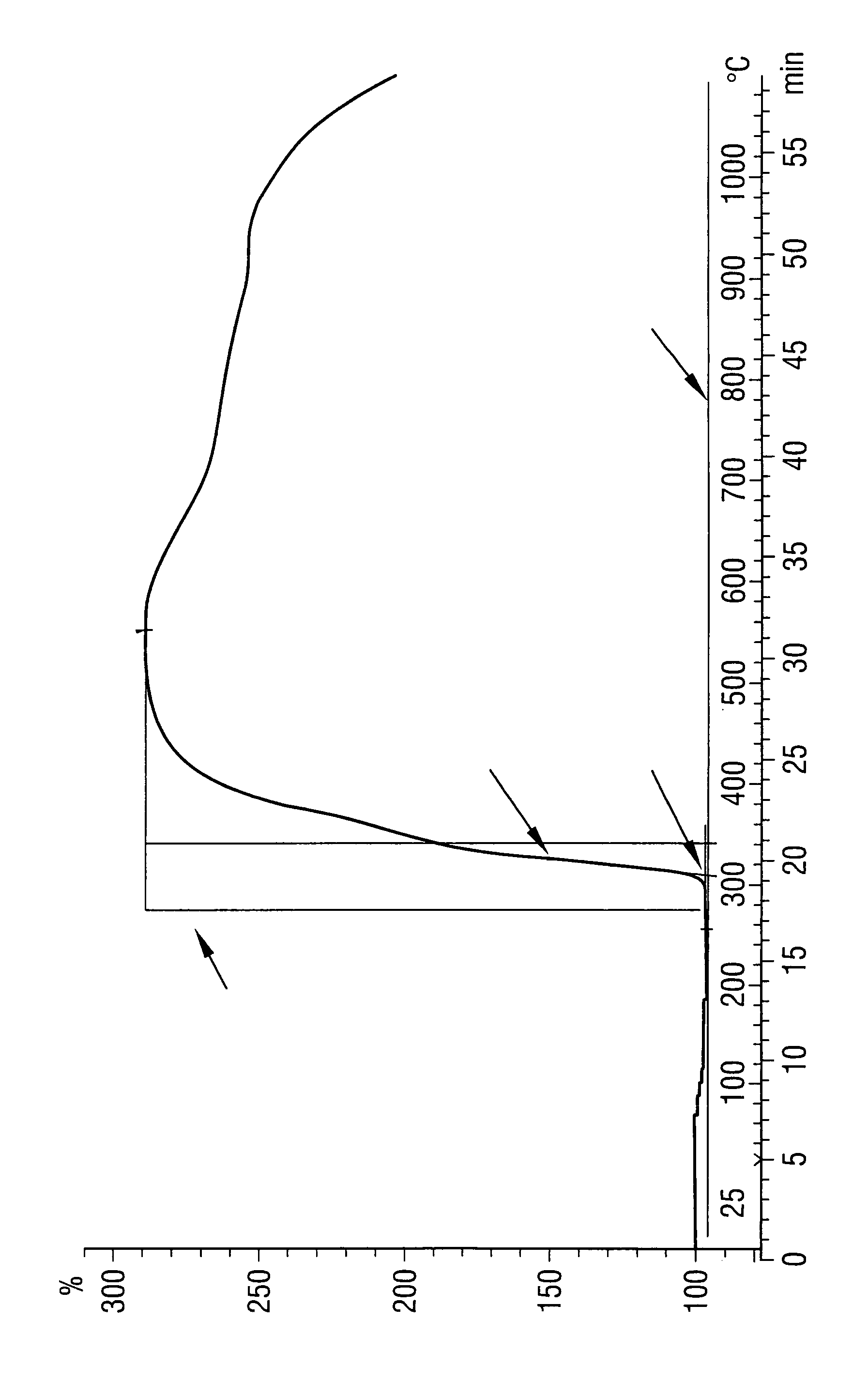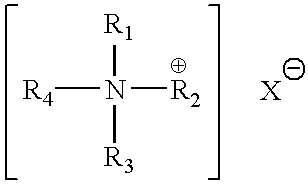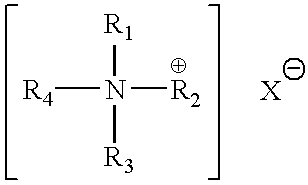Phyllosilicate-intercalation compounds
a technology of intercalation compound and phyllosilicate, which is applied in the field of phyllosilicate intercalation compound, can solve the problems of limited commercially available phyllosilicate, limited use of passive fire protection of these materials, and insatisfactory expansion of expandable phyllosilicate obtained by this state of the art, and achieves the effect of increasing the expansion volum
- Summary
- Abstract
- Description
- Claims
- Application Information
AI Technical Summary
Benefits of technology
Problems solved by technology
Method used
Image
Examples
example 1 (
COMPARISON)
[0049]This Example illustrates only how the onset temperature and the expansion volume are determined analytically by means of native, conventional, commercial vermiculite from China.
[0050]Commercial, native vermiculite (20 mg) is weighed into a 150 μL corundum crucible and covered with a 150 μL steel crucible as lid, in order to achieve a uniform distribution of the load of 0.06N. In this connection, the steel crucible should be wide enough to dip into the corundum crucible in order to guarantee that the device is adequately stable. Subsequently, the sample arrangement is placed on the sample stage of the TMA device, so that the measurement probe (quartz glass stirrup) contacts the bottom of the steel cable centrally. In this way, it is guaranteed than any change in length of the sample is recorded without interference by the measurement probe. The sample is weighed down by a constant load of 0.06 N and heated at a rate of 20° C. / min to 1100° C. The change in length is m...
example 2
Intercalation of Ethylene Glycol in Vermiculite after Ion Exchange with Decyltrimethylammonium Bromide
[0052]In a 100 mL beaker, 3 g (0.05 moles) of native vermiculite are stirred in 10 mL of a 0.1 molar aqueous solution of decyl-trimethylammonium bromide and the cationic surfactant is allowed to act for 48 hours.
[0053]For the working up, the supernatant solution is decanted and the residue washed with a few milliliters of water. Subsequently, the vermiculite, ion-exchanged in this manner, is treated with 10 mL of ethylene glycol in a 50 mL beaker. After a reaction time of 48 hours, the supernatant liquid is decanted off and the residue dried for 6 hours at 60° C.
[0054]TMA analysis revealed an onset temperature of 296° C. and a standardized expansion volume of 18.5 (% / mg).
example 3
Intercalation of Ethylenediaminetetraacetic Acid (EDTA) in Vermiculite Ion-exchanged with Decyltrimethylammonium Bromide
[0055]Vermiculite (3 g, 0.05 moles) is transferred to 20 mL of an aqueous solution, which contains 0.01 moles of decyltrimethylammonium bromide and 0.05 moles of EDTA and this reaction mixture is allowed to act for 72 hours. The product is worked up by decanting the supernatant solution, washed with 100 mL of water in portions and subsequently dried for 6 hours at 60° C.
[0056]TMA analysis reveals an onset temperature of 248° C. and a standardized expansion volume of 20.8 (% / mg).
PUM
| Property | Measurement | Unit |
|---|---|---|
| particle diameter | aaaaa | aaaaa |
| particle diameter | aaaaa | aaaaa |
| temperature | aaaaa | aaaaa |
Abstract
Description
Claims
Application Information
 Login to View More
Login to View More - R&D
- Intellectual Property
- Life Sciences
- Materials
- Tech Scout
- Unparalleled Data Quality
- Higher Quality Content
- 60% Fewer Hallucinations
Browse by: Latest US Patents, China's latest patents, Technical Efficacy Thesaurus, Application Domain, Technology Topic, Popular Technical Reports.
© 2025 PatSnap. All rights reserved.Legal|Privacy policy|Modern Slavery Act Transparency Statement|Sitemap|About US| Contact US: help@patsnap.com



